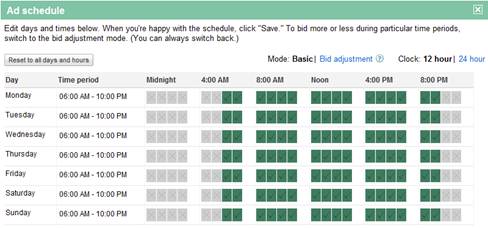Pay Per Click (PPC) advertising is a very effective way to drive targeted traffic to your website, increase your leads-to-sales conversions, and announce new products and services. However, achieving success and maximizing your return on investment withPay Per Click is not merely a matter of outbidding your competition for prime ad placement. As with any Internet marketing strategy, it’s critically important to have a clear understanding of the fundamentals and develop a PPC advertising plan before the campaign is launched. Otherwise, you run the risk of wasting your time and resources to take advantage of this increasingly effective means of reaching your targeted audience.
Here are some Pay Per Click advertising tips that will help you get started:
1. Establish a Budget – This may seem simple and obvious but creating a budget and sticking to it is the best way to keep from overspending and falling victim to bidding wars for popular search terms.
2. Develop a PPC Marketing Plan – Creating a plan in the early stages gives you a template to follow which should include thorough research of your industry, your competition, and a prioritized list of your targeted keywords and phrases.
3. Consider your Target Audience – Spend some time assessing who you want to click on your ad, the search terms they are likely to use, and how broad or narrow your intended demographic may be. Determining your audience in the early stages will help to inform your decisions in every phase of the campaign.
4. Identify Niche Opportunities – Instead of focusing on the most popular search terms where costs and competition will be steep, think about specific two- and three-word phrases that may have been overlooked by your competitors.
5. Write Compelling Ad Copy – You have a finite amount of space, so choose every word carefully to entice your audience to click on your ad. Most web users know the difference between sponsored and organic search results but if your ad copy leads them to believe that the link will help them find what they’re looking for, your click-through rates and sales will take off.
6. Craft Custom Landing Pages – This is essential. Each ad must take the viewer to a landing page where they can quickly and easily find what they need. Always remember that web users scan content and the decision to stay or look elsewhere is made in seconds.
7. Create and Analyze Performance Reports – These reports will tell you which ads are underperforming and which are exceeding expectations. Use this data to fine tune and adjust your marketing plan. Track your results at regular intervals.
Here are some Pay Per Click advertising tips that will help you get started:
1. Establish a Budget – This may seem simple and obvious but creating a budget and sticking to it is the best way to keep from overspending and falling victim to bidding wars for popular search terms.
2. Develop a PPC Marketing Plan – Creating a plan in the early stages gives you a template to follow which should include thorough research of your industry, your competition, and a prioritized list of your targeted keywords and phrases.
3. Consider your Target Audience – Spend some time assessing who you want to click on your ad, the search terms they are likely to use, and how broad or narrow your intended demographic may be. Determining your audience in the early stages will help to inform your decisions in every phase of the campaign.
4. Identify Niche Opportunities – Instead of focusing on the most popular search terms where costs and competition will be steep, think about specific two- and three-word phrases that may have been overlooked by your competitors.
5. Write Compelling Ad Copy – You have a finite amount of space, so choose every word carefully to entice your audience to click on your ad. Most web users know the difference between sponsored and organic search results but if your ad copy leads them to believe that the link will help them find what they’re looking for, your click-through rates and sales will take off.
6. Craft Custom Landing Pages – This is essential. Each ad must take the viewer to a landing page where they can quickly and easily find what they need. Always remember that web users scan content and the decision to stay or look elsewhere is made in seconds.
7. Create and Analyze Performance Reports – These reports will tell you which ads are underperforming and which are exceeding expectations. Use this data to fine tune and adjust your marketing plan. Track your results at regular intervals.
